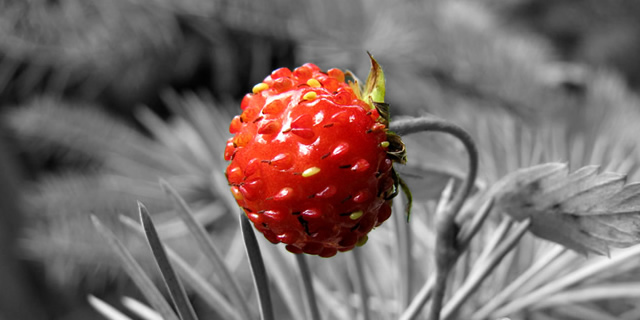Is it easy to color only some parts of an image/photograph?
Yes.
Is it easy in Adobe Fireworks?
It’s even easier than you may think! :-)

(original photo by Ani, CC)
The image above was edited by me in less than 5 minutes, and yet, the final effect is quite impressive!
How it is done?
There are probably more than five ways to achieve a similar effect, but here’s how I proceeded:
1) Open a digital photograph in Fireworks;
2) ctrl+shift+D (cmd+shift+D on a Mac) to clone the layer with the photo;
3) In the Layers panel you now have 2 identical layers, both of them in color;
4) Select the lower layer, “lock” it in the Layers panel;
5) Select the upper layer, use menu Commands > Creative > Convert to Grayscale to convert it to black & white;
6) Now you have a b&w layer above a color layer;
7) From now on, it is easy: simply delete (use Marquee Tool, Eraser Tool, or a combination of both) parts of the upper, b&w layer, and the color parts will start to show through! Done! :-)
This technique can be quite effective, if applied to the right kind of image. In this case the original is very good for this purpose, as color is almost missing from it.
You can try to play with colors in GIMP, Fireworks, Photoshop — I don’t think there will be much difference in any contemporary graphics pogram:)
Finally, thanks to Geri, who inspired me to try this effect in Fireworks! ;-)
For this kind of thing, I like to use a mask on the top layer, created from the image’s source luminosity.
I then use the point-to-point selection tool to rough in a selection, then flood that selection with black to allow the color layer below to show through the mask. I then invert the selection and flood with white to make that area of the mask completely opaque. Finally, I use the airbrush tool to touch up and blend the edges of the unmasked content.
I find it’s much faster this way than just using the erase tool, and if I expose too much, I just add back to the mask to cover it up.
@Mike:
Well, there are a lot of ways of achieving a similar effect.
The one I explained and used in this mini Fireworks tutorial, is probably the simplest. It’s not ideal, but it gets the job done in a matter of seconds, a few minutes at the most.
You can also use a non-destructive masking technique, outlined very well by Stéphane Bergeron. But it requires a bit more effort, too, and if you’d like to achieve quick, easy results, you would probably use a simple eraser, in some situations… :)